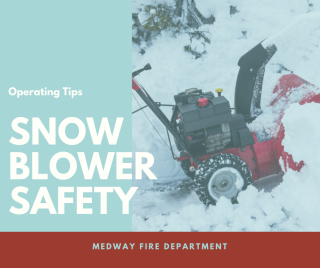Snow Blower Operating Safety Tips
Posted on: December 12, 2019 - 11:23am

SNOW BLOWER SAFETY TIPS
Most injuries associated with snow blowers involve injuries to the hand or finger, including amputation. The typical cause is users trying to clear a clogged auger or discharge chute with their hands. No matter what kind of snow blower you’re using, here are a few basic steps to follow to help keep you and others from being injured.
- Stay safe when operating a snow blower. Turn off the engine on a gas machine or unplug the motor on an electric model before clearing a clog at the auger or discharge chute. Use the clearing tool or stick, never hands or feet, to remove the clog. Always assume that when the engine is running, the auger is spinning.
- Protect yourself from carbon-monoxide poisoning by starting and running gasoline-powered snow blowers outside, rather than in the garage or shed.
- Don’t wear loose pants, jackets, or scarves, which can get tangled in a snow blower’s moving parts.
- Wear sturdy footwear with good traction. Exercise caution when operating on slopes or other grave areas.
- Thoroughly mix fuel to the proper gas/oil ratio. Add fuel to the machine only when the engine is off and cooled. Use an approved fuel container to hold the gasoline.
- Never direct the discharge chute toward people or areas where damage can occur. The blower can discharge hard objects much further than it can discharge snow.
Conclusion: Following these tips will help keep you safe. Clearing clogs is the number one cause of snow-blower-related injuries. Take special care when clearing clogs by ALWAYS making sure the machine is off and NEVER use your hands or feet to clear a clog. Use a clearing tool or stick instead.

